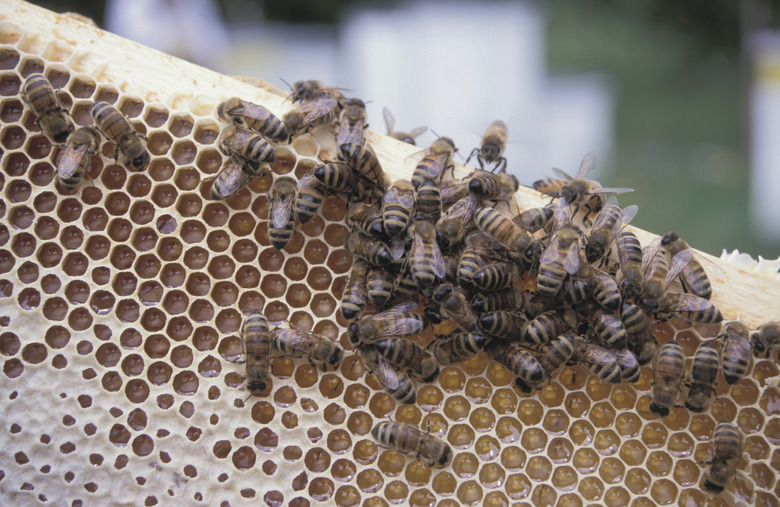How To Build A Mason Bee House
Unlike honey bees that live in groups in hives, mason bees are solitary and lay single eggs in pre-existing holes in wood. Mason bee blocks are easy to make and install, and since mason bees do not drill out their own homes, there is no reason to worry about them destroying other wood around your house. Since mason bees are not aggressive, the males do not sting and the females rarely sting, they are a good pollinating insect to have around your home and garden.
Building a Mason Bee House
Step 1
Drill several holes 3 to 5 inches deep into the wood using a 5/16-inch drill bit. Choose wood that is thick enough that you will not break all the way through to the other side. Untreated 4x4 woods are sufficiently thick enough.
Step 2
Use screws to secure chicken wire over the holes to prevent birds and larger bees from gaining access. Make sure the chicken wire will allow entry for a bee that is larger than 1/4-inch in diameter. Pushing the chicken wire into the shape of a bubble with side access is a good way to keep the holes out of a beak's reach.
Step 3
Screw the piece of wood to the place where the mason bees will live, making sure the hole will be accessible to the bees. The best spots are places you have seen the bees before and that are preferably sheltered from rain and receive morning sunlight. Mason bees begin nesting in March, so this is the best time of year to put up the house. The best places are the south sides of fence posts, buildings or trees.
Step 4
Relocate mason bees in the spring. Put up some of these houses in March in places you have seen the bees before. In September to November, remove and relocate the houses. By this time the mason bee larvae will have grown into bees and will be resting in their silk cocoons until the spring. Make sure to carry, and leave the house upright.
Step 5
Cover the mason bee houses in November to protect them from the elements. Leave them in a dry and unheated place. If you have protected the houses from the snow and rain all winter, the mason bees should emerge in March or April of the next year.
Things Needed
- Drill
- 5/16-inch drill bit
- Screws
- Chicken wire
- Untreated wood
TL;DR (Too Long; Didn't Read)
Mason bees will reuse the same houses for a year or two, but once a house is relocated, it is important to give them new holes to move into, as old ones become fouled.
Warning
Do not spray insecticides around mason bee houses.
To be safe, people with systemic reactions to bee stings should not take on this project.
References
Cite This Article
MLA
Grant, Zane. "How To Build A Mason Bee House" sciencing.com, https://www.sciencing.com/build-mason-bee-house-5872632/. 24 April 2017.
APA
Grant, Zane. (2017, April 24). How To Build A Mason Bee House. sciencing.com. Retrieved from https://www.sciencing.com/build-mason-bee-house-5872632/
Chicago
Grant, Zane. How To Build A Mason Bee House last modified March 24, 2022. https://www.sciencing.com/build-mason-bee-house-5872632/
